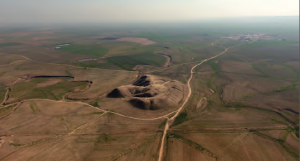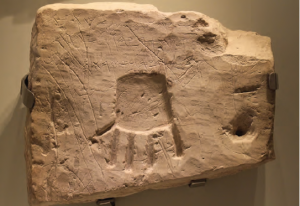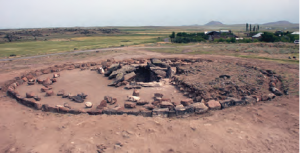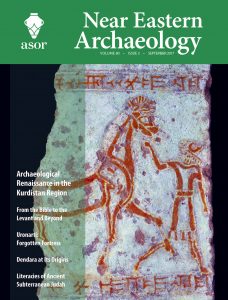
Table of Contents for Near Eastern Archaeology 80.3 (September 2017)
Subscription Options
You can receive NEA (and other ASOR publications) through an ASOR Membership or through an Individual Subscription. Single issues (subject to availability) are available for purchase, with ASOR members receiving a discount. Please email us if you have any questions.
Pp. 148-153: “From the Bible to the Levant and Beyond,” by William G. Dever
Professor Dever reflects on eighty years of Near Eastern Archaeology within the changing disciplinary landscape of biblical and Near Eastern archaeology.
Click here to access the above article on JSTOR (ASOR membership with online access and/or subscription to JSTOR Current Content required).
Pp. 154-165: “Forgotten Fortress: Returning to Uronarti,” by Laurel Bestock
The kings of the ancient Egyptian Middle Kingdom (ca. 2055–1650 B.C.E.) conquered and subsequently administered a large territory in Lower Nubia, south of the First Cataract. Monumental fortresses that were built along the banks of the Nile were excavated in the early twentieth century, but largely destroyed by the floodwaters from the damming of the Nile in the 1960s. Recent discovery that two of these fortresses have survived has led to new archaeological work, including survey and excavation at the site of Uronarti. Preliminary work there shows the complexity of lifestyle and cultural interaction at this ancient colonial outpost.
Click here to access the above article on JSTOR (ASOR membership with online access and/or subscription to JSTOR Current Content required).
Pp. 166-175: “Dendara at Its Origins: New Evidence for a Pre- and Early Dynastic Settlement Site in Upper Egypt,” by Gregory Marouard

Click here to access the above article on JSTOR (ASOR membership with online access and/or subscription to JSTOR Current Content required).
Pp. 176-187: “The Archaeological Renaissance in the Kurdistan Region of Iraq,” by Jason Ur
After an absence of over two decades, foreign archaeology has returned in earnest to one of the “cradles of civilization” in the
Click here to access the above article on JSTOR (ASOR membership with online access and/or subscription to JSTOR Current Content required).
Pp. 188-195: “Reading and Writing in the Dark at Khirbet el-Qom: The Literacies of Ancient Subterranean Judah,” by Alice Mandell and Jeremy Smoak
How did ancient Israelites and Judeans interact with inscriptions located in subterranean contexts such as tombs, tunnels, and caves? What roles did writing hold in the darkness of such places? The present article argues that a multimodal approach to literacy needs to be applied to the study of such inscriptions in order to understand how they communicated to audiences underground in the dark. We challenge traditional approaches to the study of tomb inscriptions in ancient Judah, most of which have studied them for what they reveal about historical grammar and the development of orthography. We argue that a better understanding of how audiences interacted with such inscriptions proceeds from a consideration of the visual grammars of tomb aesthetics, architecture, and the funerary objects in these spaces. This context is what enabled ancient audiences to decode the meaning of inscriptions in tomb complexes.
Click here to access the above article on JSTOR (ASOR membership with online access and/or subscription to JSTOR Current Content required).
Pp. 196-201: “Cimmerian and Scythian Funerary Rituals in the South Caucasus,” by Garegin S. Tumanyan
The author presents the results of his investigation of sepulchers in the southern Caucasus that carry Cimmerian-Scythian features
Click here to access the above article on JSTOR (ASOR membership with online access and/or subscription to JSTOR Current Content required).
Pp. 202-203: “‘There Is Nothing so Whole as a Broken Heart’: Reflections on ‘The Practice of Repairing Vessels in Ancient Egypt’ (NEA 79.4 [2016]) by Julia Hsieh,” by Aren M. Maeir
The author offers an additional perspective on the mending of ancient pottery, suggesting that breakage and repair are part of the normal life cycle of an object and that mending can in some cases lead to an enhancement of the original object and to a valuing of the repaired vessel.
Click here to access the above article on JSTOR (ASOR membership with online access and/or subscription to JSTOR Current Content required).
